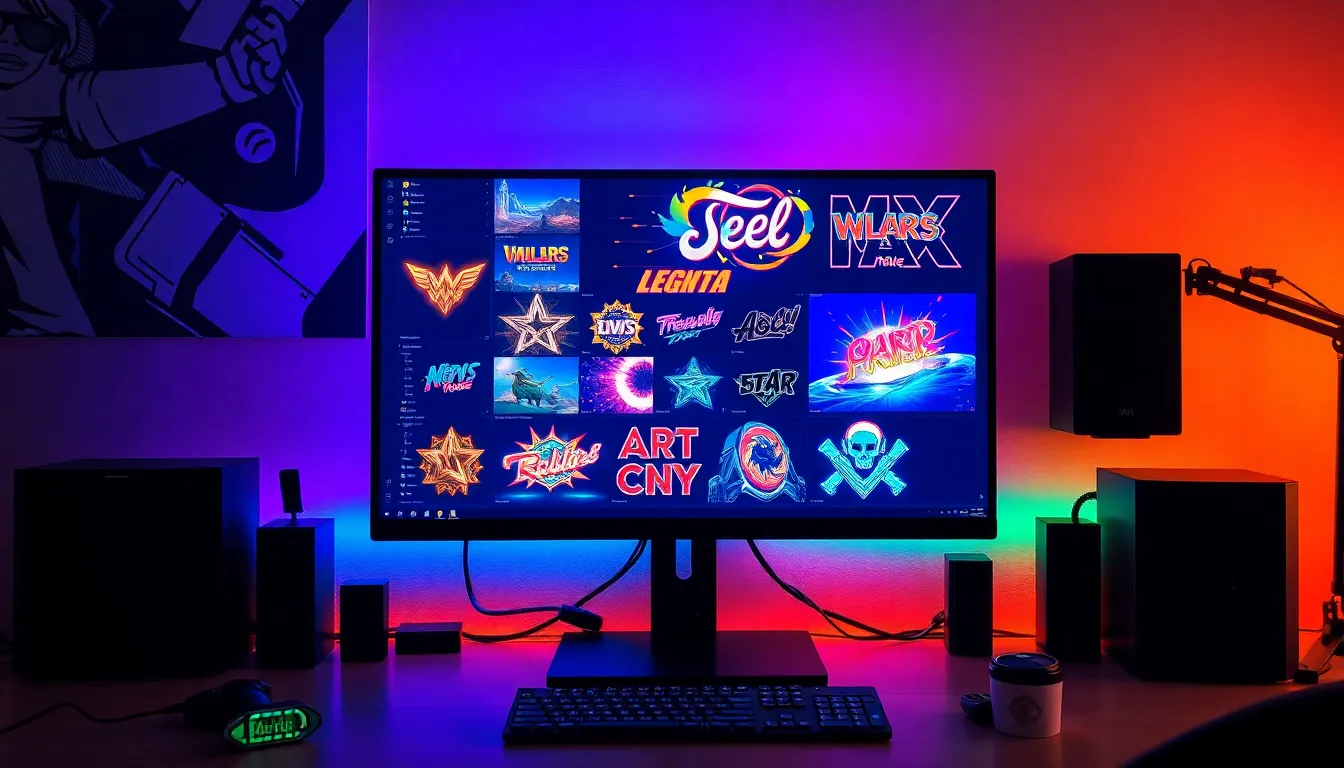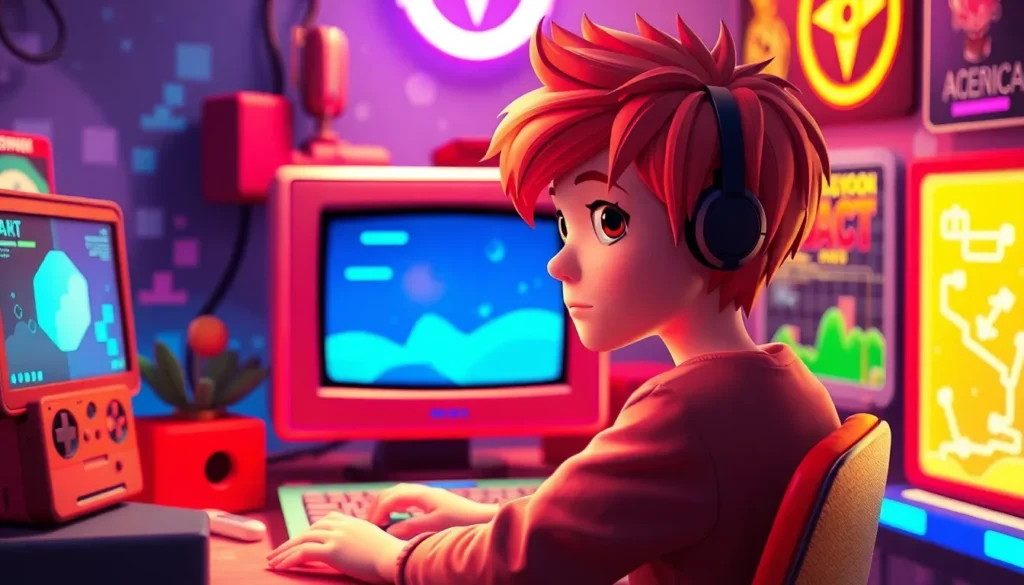Table of Contents
ToggleIn the world of graphics, where pixels dance and colors collide, the scanline shader emerges as a secret weapon for artists and developers alike. Imagine transforming your 3D creations into a retro masterpiece that oozes nostalgia and style. With its unique ability to mimic the classic look of old-school displays, it’s like giving your visuals a stylish throwback party.
Overview of Scanline Shader
Scanline shaders offer a unique approach to rendering graphics. They create a nostalgic visual effect reminiscent of retro displays, appealing to both artists and developers. By simulating the characteristics of older technology, these shaders transform modern 3D creations into stylized pieces.
Many developers use scanline shaders to add depth and character to their projects. This technique not only enhances visual aesthetics but also evokes a sense of familiarity among viewers. For instance, applying scanline effects can engage audiences by triggering memories of classic gaming experiences.
Functionality varies based on implementation. Artists can adjust parameters such as line thickness, intensity, or color to achieve desired outcomes. Different combinations of settings yield diverse results, allowing for customization in artistic expression.
Scanline shaders excel in performance optimization. They typically require less computational power than full 3D rendering techniques. Designers can leverage this efficiency, especially in real-time applications, without compromising visual quality.
Furthermore, scanline shaders integrate well with various graphics engines. Compatibility extends to popular platforms, including Unity and Unreal Engine. This flexibility broadens their appeal, allowing a wide range of professionals to experiment and innovate.
Overall, scanline shaders continue to gain popularity in graphic design and game development. They blend modern technology with retro aesthetics, providing artists tools to create visually compelling narratives. Through effective use, these shaders capture the essence of bygone eras while pushing the boundaries of creativity in the digital space.
Benefits of Using Scanline Shader

Scanline shaders offer significant advantages in graphics creation and design. These benefits enhance both visual quality and performance across various applications.
Enhanced Performance
Performance optimization remains a primary benefit of scanline shaders. They consume less computational power compared to full 3D rendering techniques. This energy efficiency allows for smoother frame rates and reduced lag, crucial elements in real-time environments such as video games. Developers can execute complex visual effects without sacrificing performance. Many projects utilizing scanline shaders show improved rendering speeds, allowing for broader accessibility across devices. Their efficient nature also leads to faster loading times, positively impacting user experience. Compatibility with popular engines like Unity and Unreal further boosts their adoption among developers eager to create immersive experiences.
Artistic Flexibility
Artistic flexibility stands out as another major advantage of scanline shaders. These shaders enable artists to customize various parameters, including line thickness, intensity, and color scheme. This customization fosters creativity in achieving unique visual styles. Diverse artistic outcomes become attainable, allowing for a wide range of nostalgic and modern interpretations. Artists often experiment with different settings, producing visually distinct results that evoke a sense of familiarity. Moreover, numerous genres, from retro games to contemporary art pieces, benefit from the dynamic visual aesthetics enabled by scanline shaders. This versatility makes them a powerful tool in graphic design, appealing to artists and developers alike.
Technical Aspects of Scanline Shader
Scanline shaders utilize specific techniques that intertwine nostalgia with modern graphics. Their underlying algorithms and compatibility with graphics engines make them invaluable tools for developers.
Algorithm Fundamentals
Scanline shader algorithms focus on processing image data by simulating horizontal lines across the rendered output. They operate by determining pixel color values influenced by parameters like intensity and line thickness. Each stage involves calculating colors based on pixel positions, resulting in a vivid retro aesthetic. Developers often employ these algorithms to create distinct visual styles that evoke classic gaming experiences. The efficiency of these calculations leads to faster rendering speeds compared to traditional methods, making them suitable for real-time applications.
Integration with Graphics Engines
Integrating scanline shaders into popular graphics engines such as Unity and Unreal Engine is straightforward. Both engines support shader programming, enabling developers to implement custom shaders easily. Artists benefit from simplified workflows, as they can directly modify scanline shader parameters within the editor. Moreover, compatibility across different platforms allows seamless deployment, enhancing accessibility for developers. A variety of community resources and tutorials further assist in integration, fostering a collaborative environment for innovators. This versatility promotes creativity and efficiency in game design and graphics development.
Applications of Scanline Shader
Scanline shaders find extensive applications across various fields, particularly in video games and animation. Their unique aesthetic enhances the visual appeal of digital content.
Video Games
In video games, scanline shaders provide a nostalgic look that many players appreciate. Retro-style visuals can attract audiences who enjoy classic designs. Developers use these shaders to infuse modern gameplay with a vintage flair, enhancing storytelling through visual style. Customization features allow game designers to tweak line thickness and color, resulting in a distinctive appearance for each title. Popular games implementing scanline shaders demonstrate their widespread acceptance in the industry.
Animation and Visual Effects
Scanline shaders also play a significant role in animation and visual effects. Artists leverage them to create stylized animations that evoke memories of earlier animation techniques. The shaders help in establishing a unique mood and atmosphere that resonates with viewers. Variability in parameters promotes artistic experimentation, leading to innovative storytelling methods. Additionally, their efficiency enhances rendering speeds, which benefits project timelines and overall production quality.
Scanline shaders represent a remarkable fusion of nostalgia and modernity in the world of graphics. Their ability to evoke classic visuals while maintaining high performance makes them a favorite among artists and developers alike. With customizable parameters and straightforward integration into popular engines, these shaders empower creators to craft unique experiences that resonate with audiences.
The versatility of scanline shaders extends beyond mere aesthetics. They enhance gameplay and storytelling in video games and animation, allowing for innovative artistic expressions. As the demand for engaging visuals continues to grow, scanline shaders will undoubtedly remain a crucial tool for those looking to push creative boundaries in the digital landscape.







